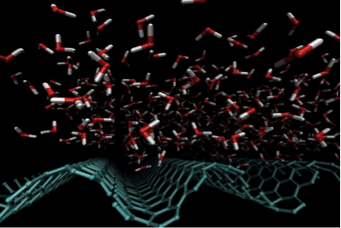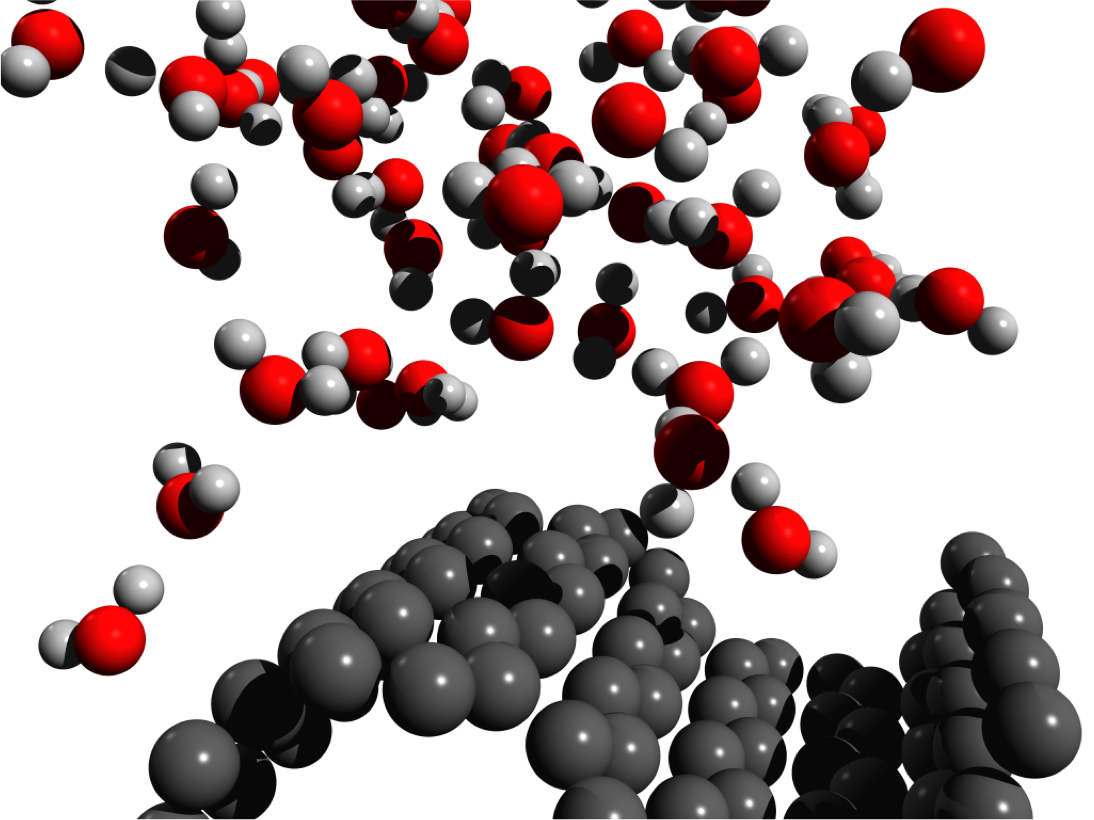Brandon Wood, Tadashi Ogitsu
Supercapacitors rely on energy storage at an electrode-electrolyte interface, permitting much higher theoretical capacitances than in standard capacitor technologies. Because they also feature intrinsically high power densities, this makes them useful as potential replacements or companions to batteries in commercial applications. Scientists at LLNL have developed a process for synthesizing highly porous carbon aerogel supercapacitor electrodes from abundant materials by low cost sol-gel chemistry. The resulting materials are lightweight, stable, have high surface area and conductivity, and permit high structural and chemical tunability at the nanoscale. However, they suffer from intrinsically low quantum capacitance.
We have been performing density-functional and ab initio molecular dynamics calculations to identify the specific factors that control electrode performance. Our models are based on defective graphene derivatives representative of aerogel surfaces, including structural point defects, strain-related morphological changes, and surface chemistry. The results are combined with predicted and measured in situ X-ray absorption spectra in order to give insight into the structural and chemical features present in synthesized carbon aerogel samples.


[1] J. Biener, S. Dasgupta, L.-H. Shao, D. Wang, M.A. Worsley, A. Wittstock, J.R. Lee, M.M. Biener, C. Orme, S.O. Kucheyev, B.C. Wood, T.M. Willey, A.V. Hamza, J. Weissmüller, H. Hahn, and T.F. Baumann, "Macroscopic 3D nanographene with dynamically tunable bulk properties," Advanced Materials 24, 5017 (2012).
[2] B.C. Wood, T. Ogitsu, M. Otani, and J. Biener, “First principles-inspired design strategies for graphene-based supercapacitor electrodes,” J. Phys. Chem. C 118, 4 (2014).
